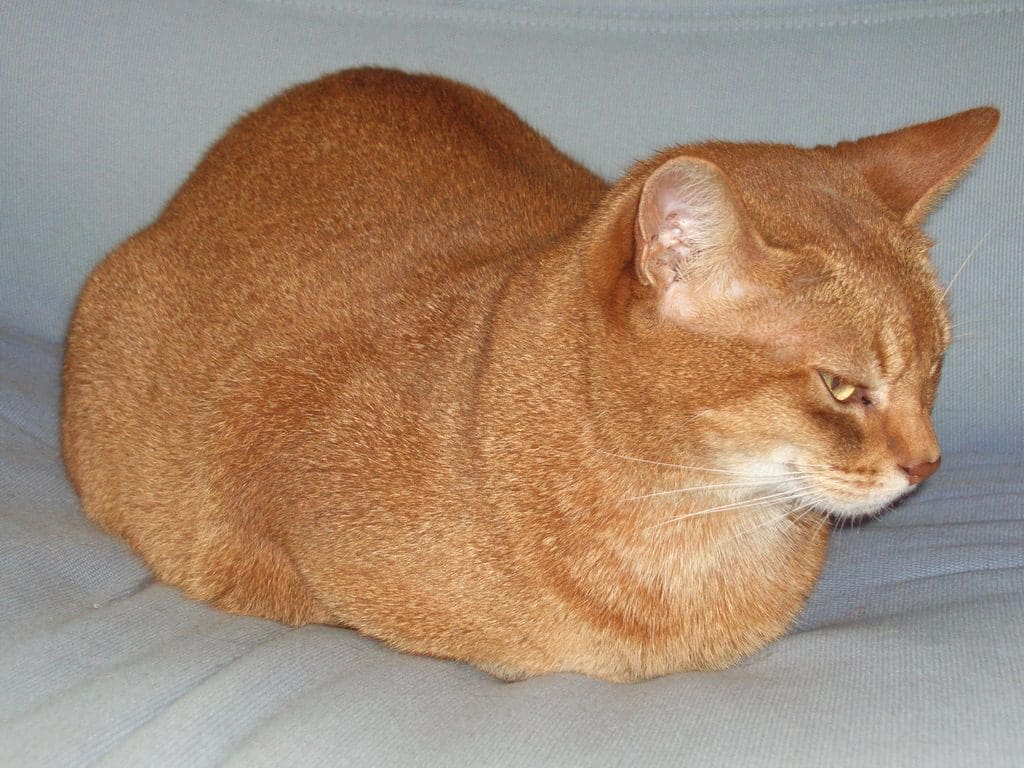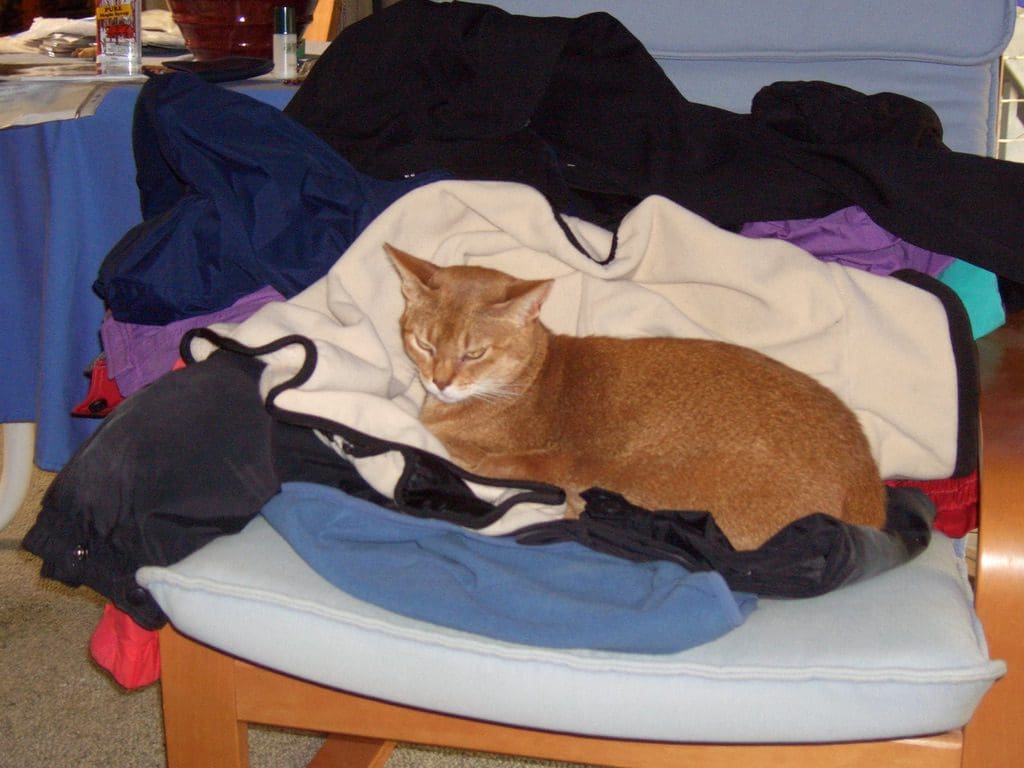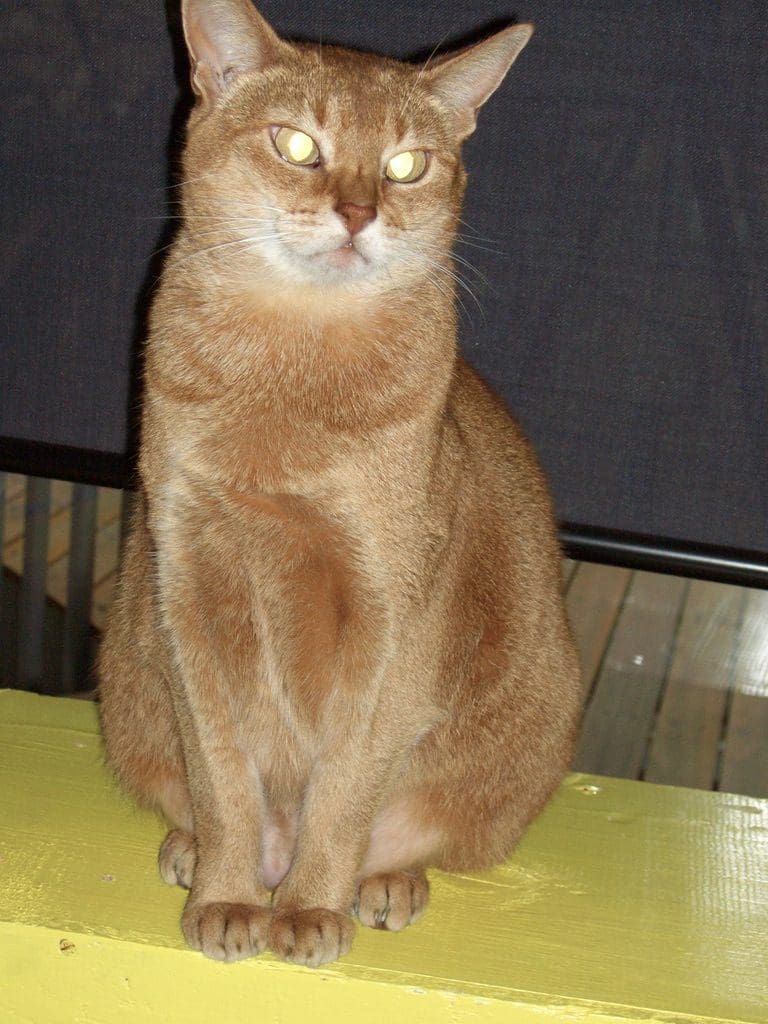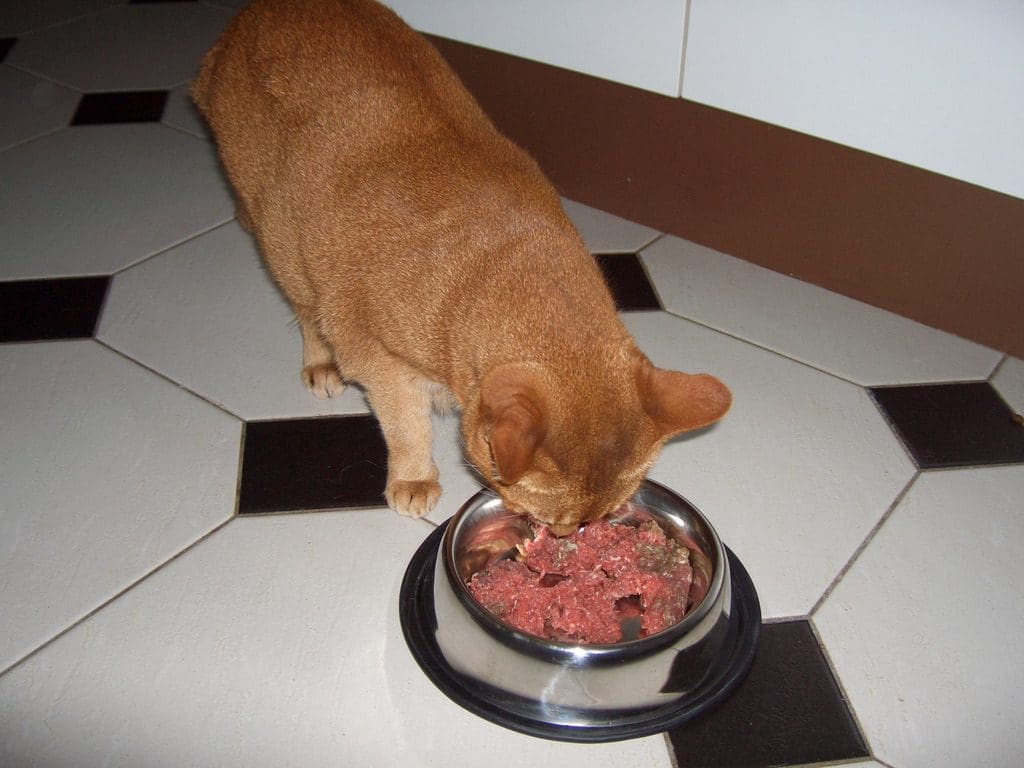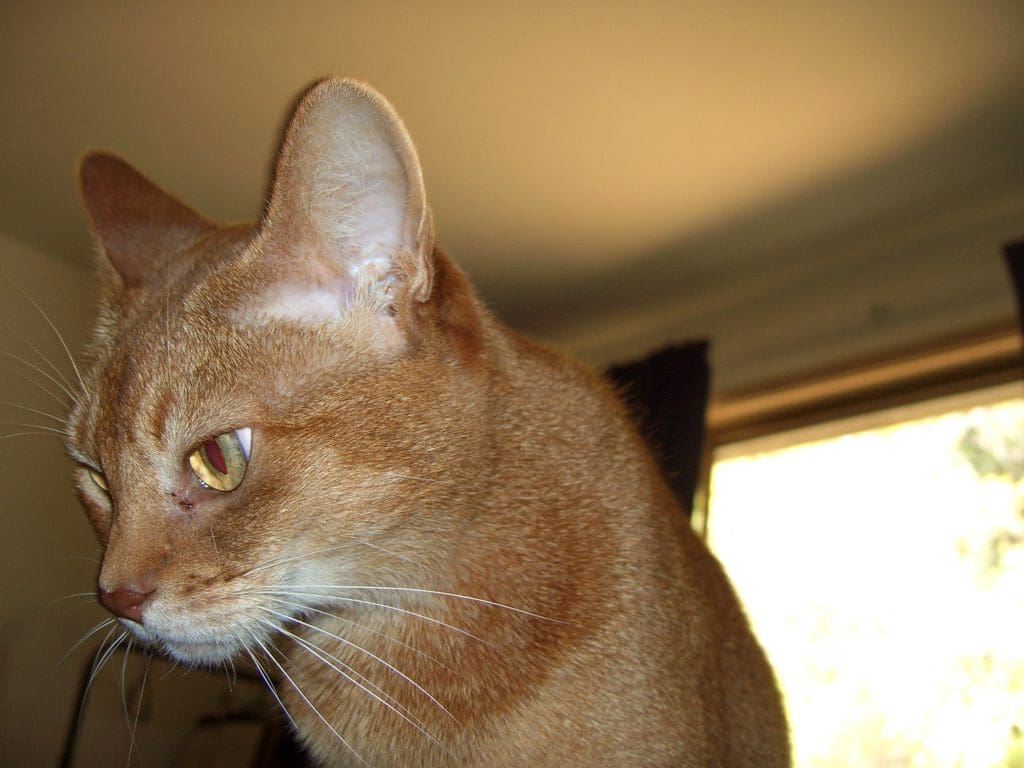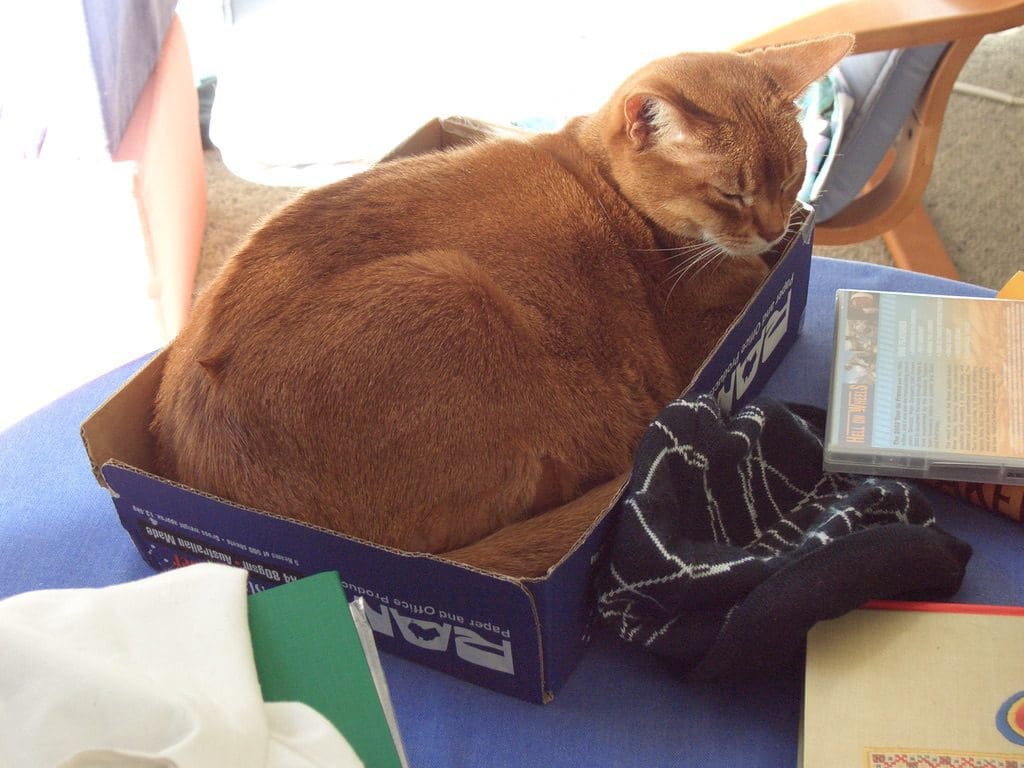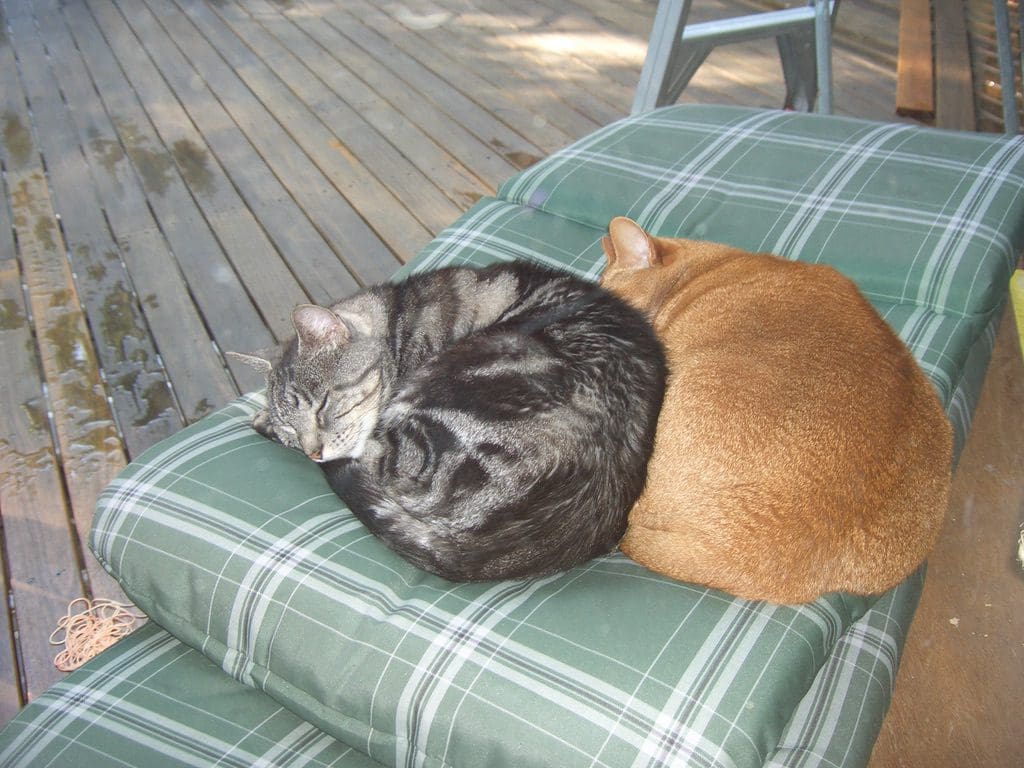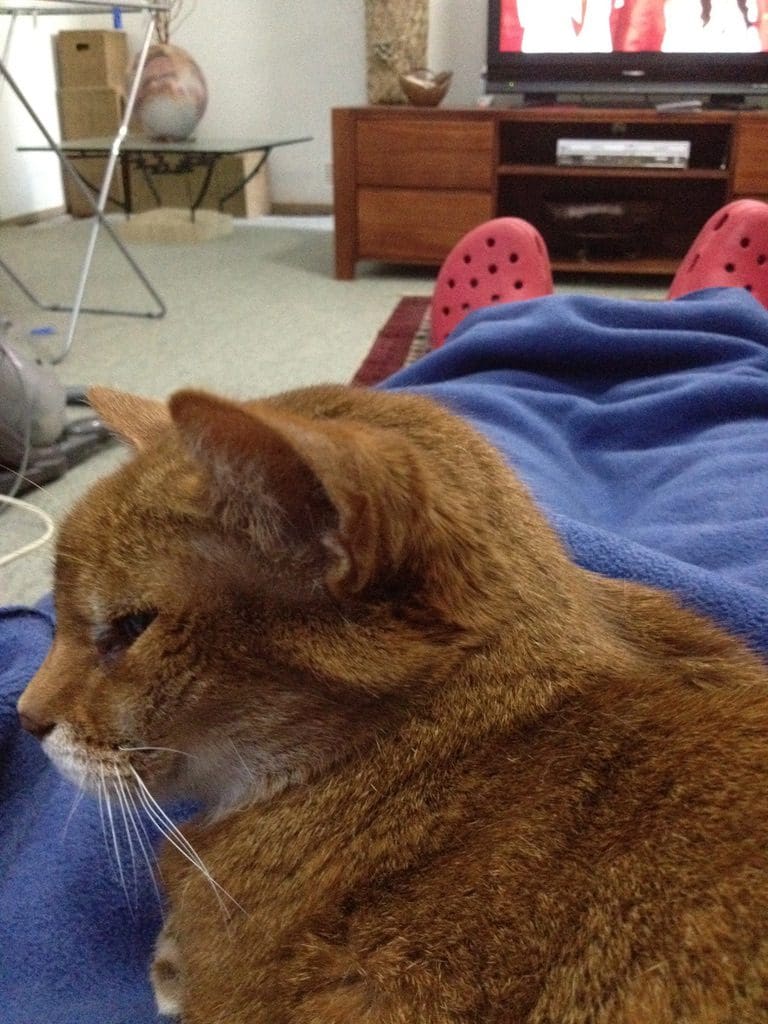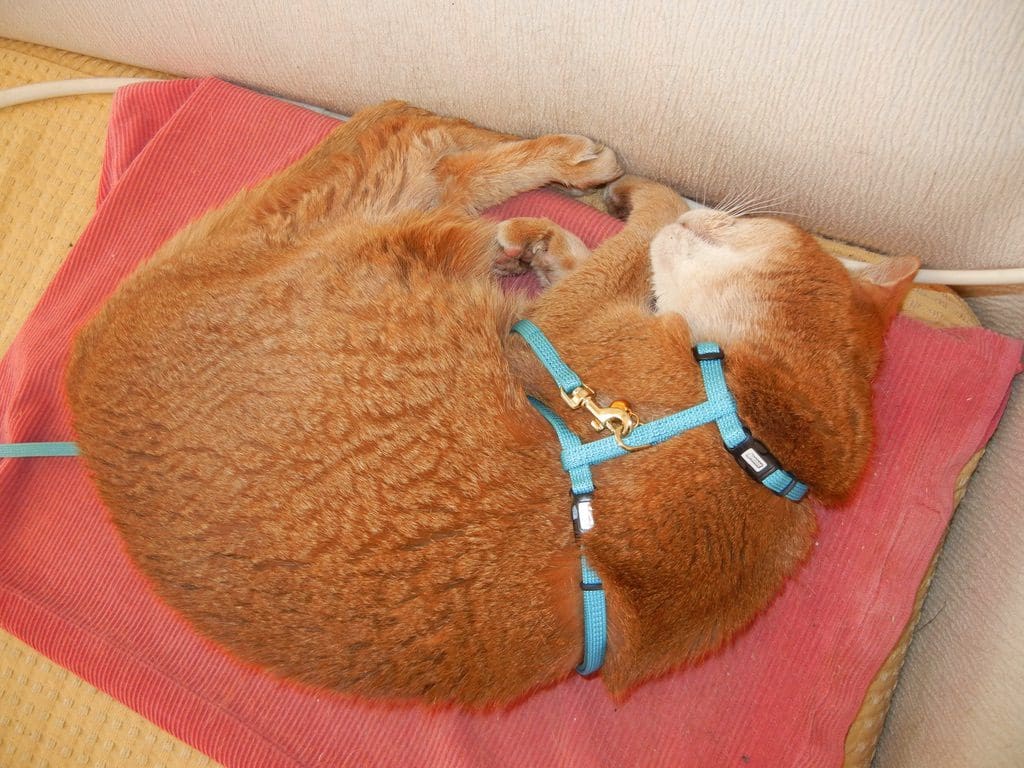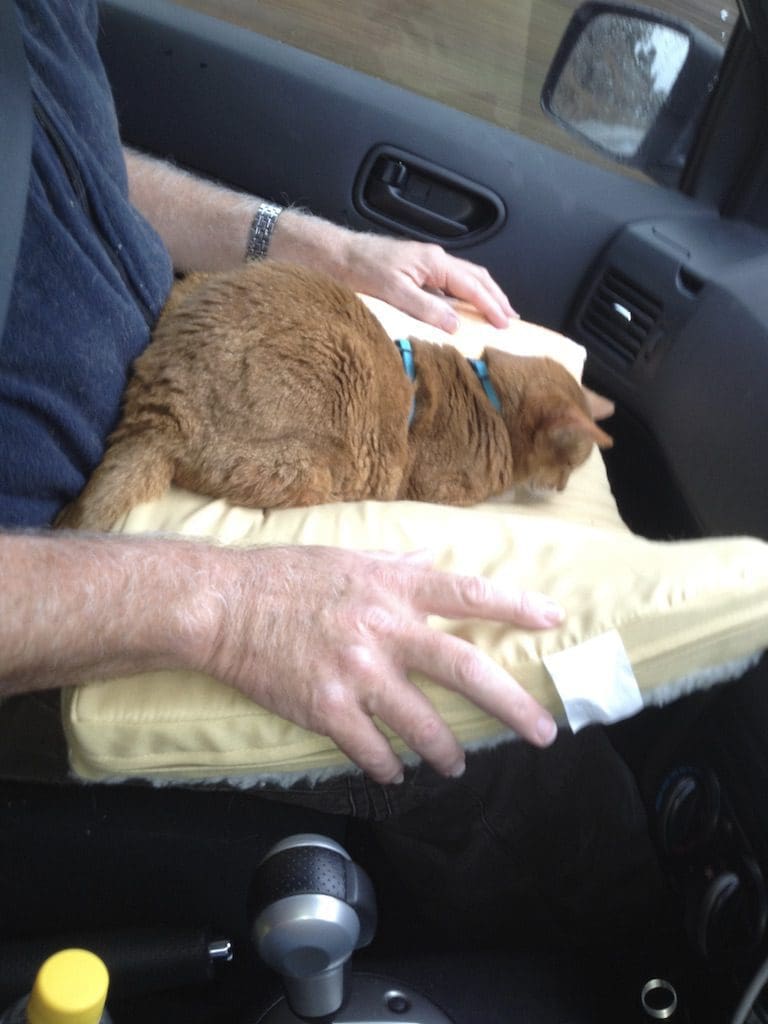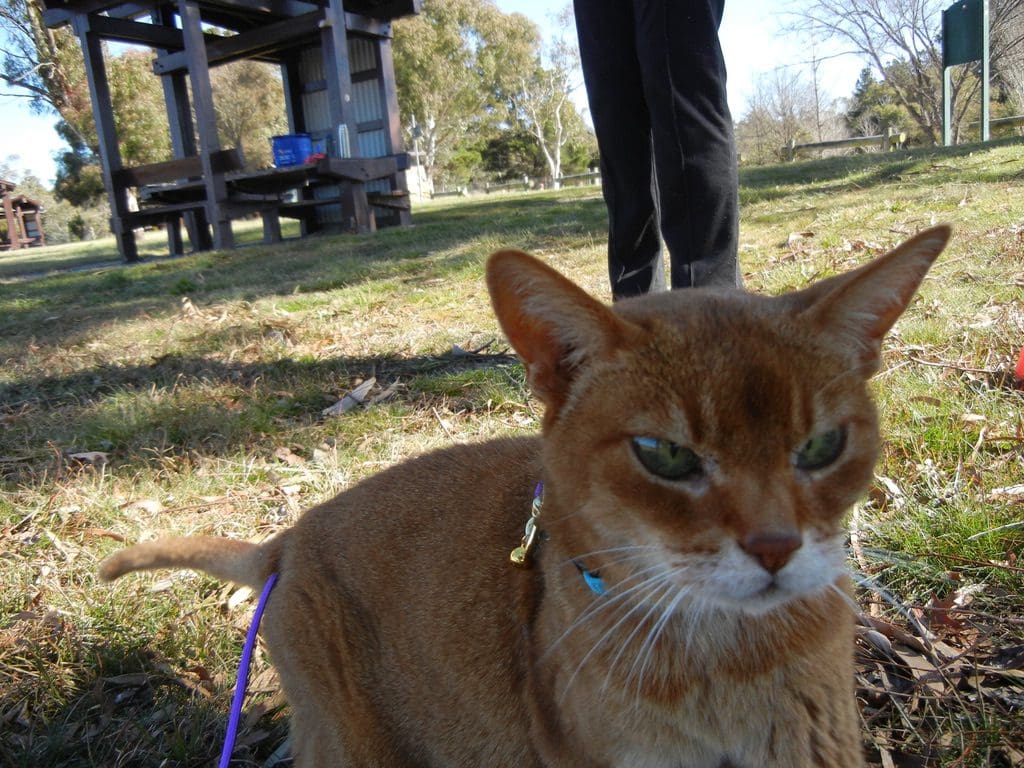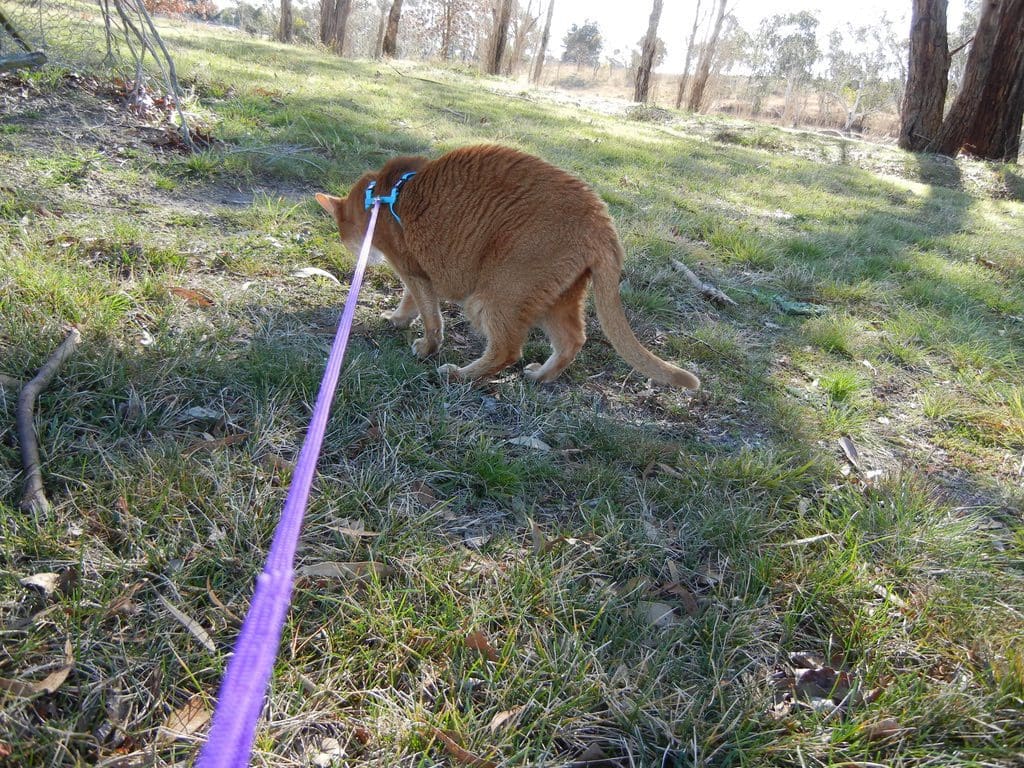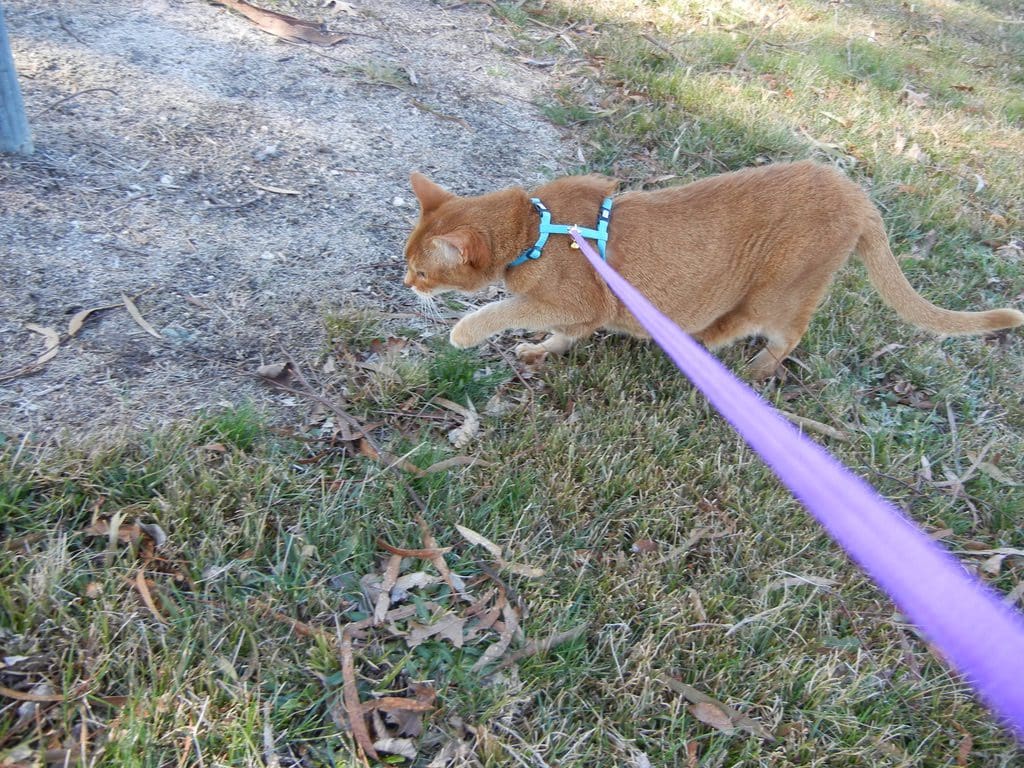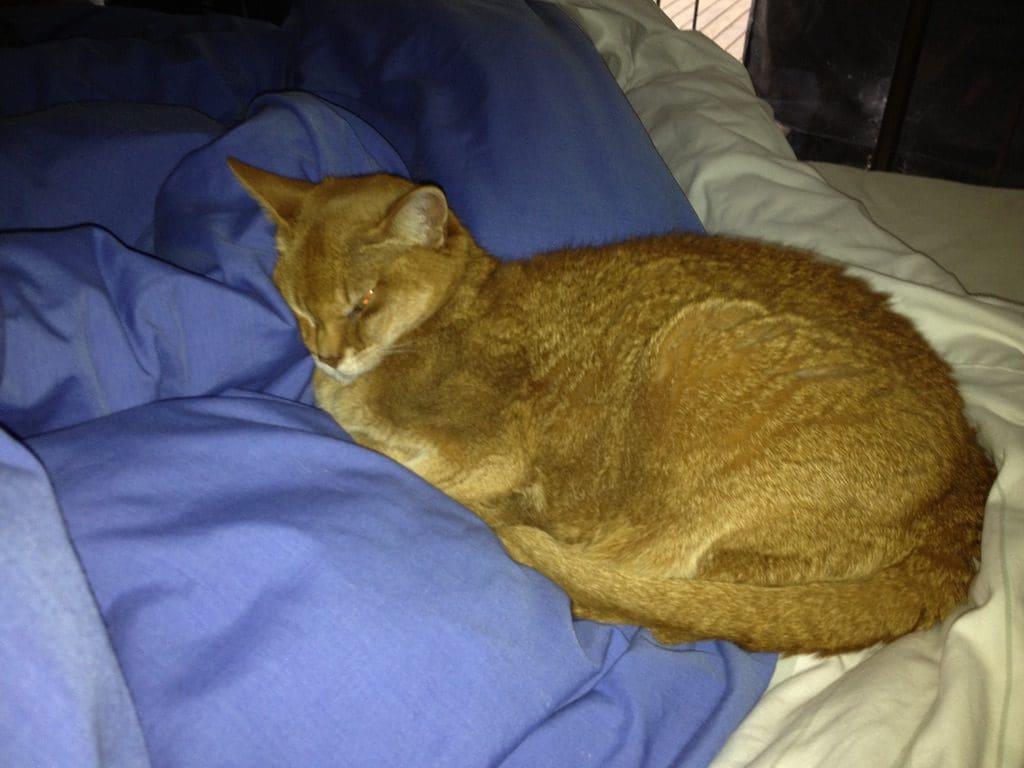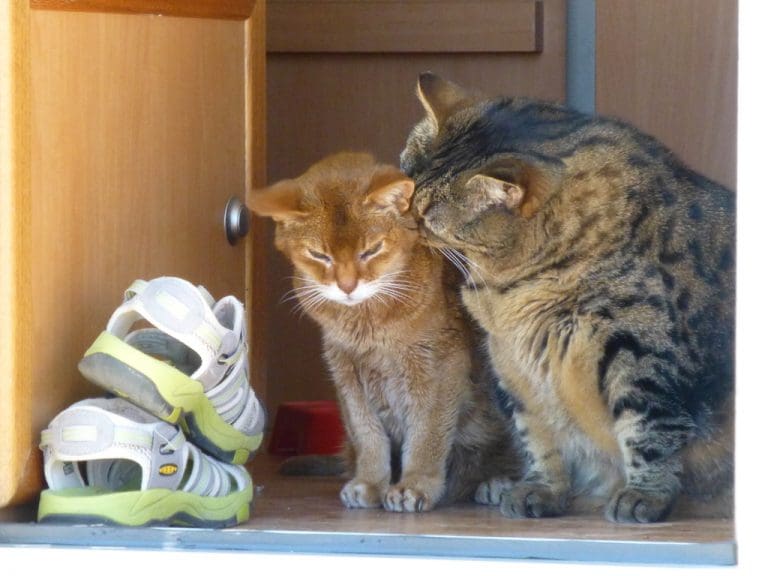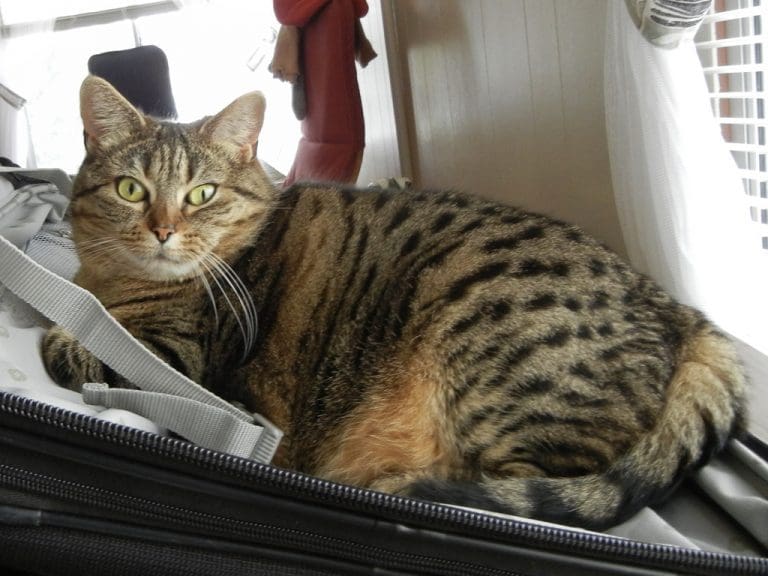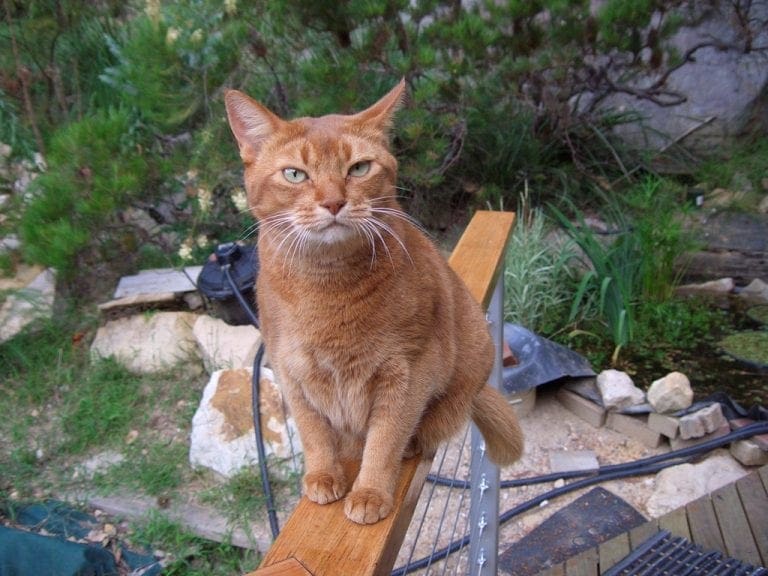Zazu Obituary
Zazu (31 Jul 1995 – 29 May 2014)
- Sleeping in the purple vest – while I had it on. She liked winter best because of that vest and really missed it each year when I stopped wearing it.
- Watching every shovel of dirt I shovelled in the backyard. 34 buckets a day for months with Zazu standing or lying watching.
- Walking up the planking we had set up on the old back deck. Prancing up and down it to show how clever she was.
- Sleeping in the bed – between the sheets.
- Playing football with the kids next door – them kicking the rugby ball to each other and Zazu standing in the middle chasing the ball each time.
- Jumping over the balcony railing and falling down, with a puzzled look but looking up at the rail. ‘How could I have missed that’
- Failed covering litter tray 101. Scratching everything in a metre radius.
- Holding one end of the tape measure down for the bloke who came to measure the windows.
- Going out to count her fish every morning.
- Taking on the scrub turkey in the backyard – it back down and went a different way.
- Taking on the chocolate spaniel in the front yard – and colliding with Wookie at the same time. Huh?
- Not playing with Tain when she first arrived – him wanting to play and her not knowing how.
- Climbing trees as a kitten with Tain running around the base – ‘help her down’
- Climbing up my leg when she was a kitten.
- Pulling herself along our legs in the bed when she was a kitten.
- Taking on a magpie on a road trip. It had come down for food. Zazu just walked into the space and licked down her shoulders.
- A travel cat. Initially, she was terrified of the car and tried to bury herself under the seats. She soon became very used to the car and van – when packing was being done and the van pulled out, she was first in the van and was a frequent visitor to see where we were up to.
- Show off cat. I a van park, we would often take Zazu for a walk. People were amazed at this cat on a lead and she would prance about showing off and greeting everyone. She knew exactly where our van was with relationship to her and if anything startled her, she made a direct line back to the van.
- Travel with her rotated around her need for a piss. We would wait every day for Zazu to have a piss before we could leave. Then, stop every hour to see if she needed another.
- As she got older she had considerable trouble with painful pissing. Very stressful.
- The world needed to revolve around Zazu.
